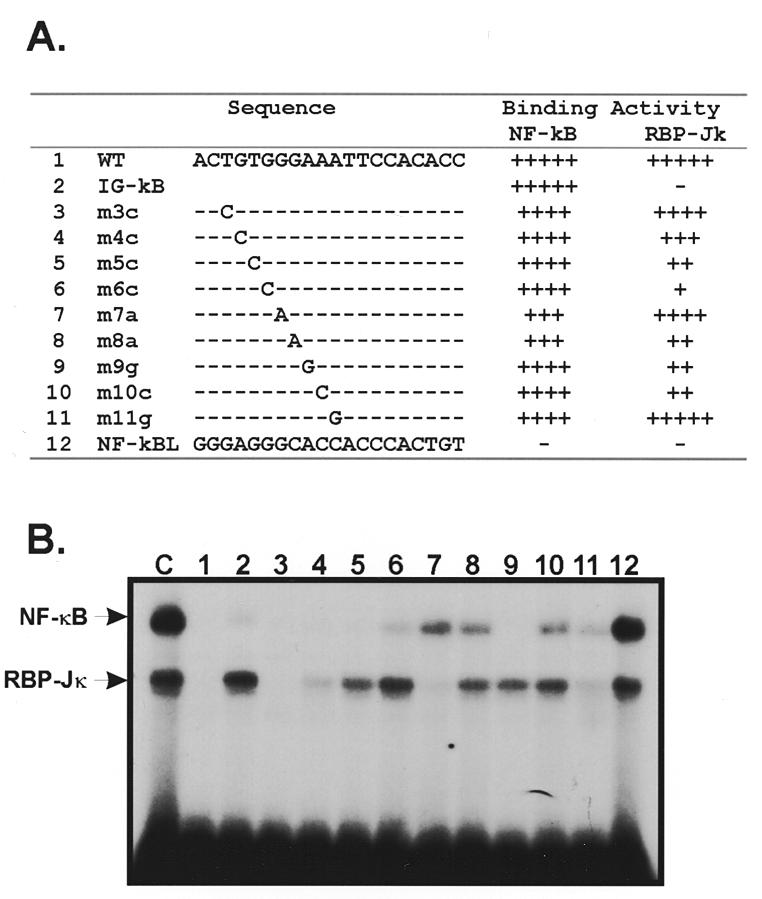Figure 5.

(A) Sequences of CYP2B1/2 NF-κB mutant oligonucleotides. Sequences (top strand) of NF-κB 2B1/2 (oligo 1) and NF-κB Igκ (oligo 2) oligonucleotides, and various point substitutions (oligos 3–12) are aligned. The relative ability of these oligos to compete for NF-κB and RBP-Jκ binding activity is indicated to the right (100%, +++++; 80–100%, ++++; 60–80%, +++; 40–60%, ++; 20–40%, +; <20%, –/+; no binding, –). (B) Competition for NF-κB and RBP-Jκ complex formation using mutant oligonucleotides. Oligonucleotides 1–12 were used as competitors in band shift reactions containing HeLa cell nuclear extracts and a labeled NF-κB 2B1/2 probe (lanes 1–12). Lane C shows a control experiment performed in the absence of competitor.
